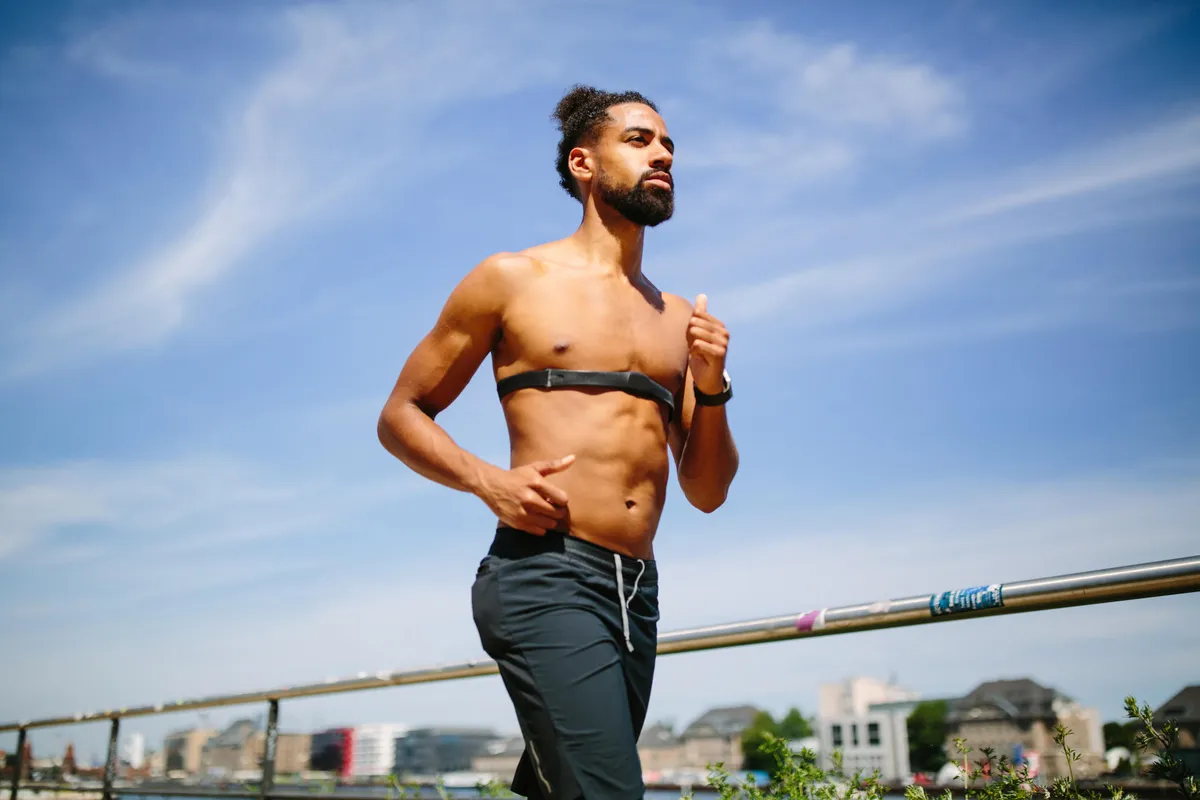Fundamentals of Heart Rate Monitoring

Monitoring the heart rate during training is a common practice. In this post, some of the basics of heart rate monitoring and how to use this method in running classes of Tehrun Club are reviewed.
Heart rate is a metric pointing to the internal load or response of the body to hold a running pace. On the other hand, the split time you maintain while running a fixed distance – 200m, 400m or 1km – is the external load placed on the body.
It is important to understand this distinction.
Pace is objective while heart rate is subjective, variable and specific to a runner’s body. Heart rate is measured in beats per minute. When monitored in combination on a sports watch, heart rate and pace become powerful ways to modulate the training effort for meeting the session’s goals.

So why bother to monitor the rate of an organ pump in the body?
Here are some reasons to clarify this:
- The heart is an organ pump which supplies a vital fluid to tissues and muscles – blood. Blood carries oxygen which is needed to power movement of muscular motors. Knowing the beat rate of this pump helps understand whether the supply side of running is met.
- Under steady state running, heart rate shows a satisfactory linear correlation with an important physiological variable called rate of oxygen consumption rate, also called “VO2”.
This is the aerobic economy of the body to hold a certain running speed, similar to the gas consumption in your car. Therefore, heart rate may be used as a surrogate measure of oxygen consumption at steady efforts. - Various environmental and non-environmental factors can affect heart rate. For example, illness, lack of sleep, poor hydration status, training in the heat and traveling up to altitude can all affect heart rate.
Heart rate therefore becomes a “organic signal” of the internal status of the body.

Application
My years of training and coaching experience has settled on using heart rate as a response variable to monitor while using split time as primary variable to key in the external load for the session
When used in combination, they “speak” together something important about the total load of the session.
To monitor exercise intensity by heart rate, the range between maximum and resting heart rates are demarcated into training zones, typically about 5 zones.
The “Karvonen” method is a reasonable methodology to follow for this practice. A simple calculator exists on this website which explains the background:
https://www.topendsports.com/fitness/karvonen-formula-calculator.htm
As an example, a runner with a morning resting heart rate of 60 and a known maximum heart rate of 180 bpm (beats per minute) will have the following 5 zones:
Zone 1: 120-132 bpm
Zone 2: 132-144 bpm
Zone 3: 144-156 bpm
Zone 4: 156-168 bpm
Zone 5: 168-180 bpm
 The general idea here is that recovery, fat oxidation and endurance building are best done in the lower and moderate zones (Zones 1-3).
The general idea here is that recovery, fat oxidation and endurance building are best done in the lower and moderate zones (Zones 1-3).
Zones 4 and over are to pursue higher intensity running activity, which have a different session goal in mind. Generally, for endurance training, faster running sessions at zones 4 and above are pursued a great deal lower as a percentage of total time spent training when compared to lower intensity running in zones 2-3.
It is important to understand that heart rate zones are guidelines and not hard prescriptions. Zones are only as good as the inputs to make them so the resting and maximum pulse rates used in the estimation must be reviewed carefully.
Adaptation to running stresses are specific to the applied load. Running similar paces at lesser effort and lower heart rates can be considered a positive adaptation to training. Being able to run quicker at a higher heart may also signal a positive trend in stamina. Here, the ability to hold higher fractions of maximum heart rates at higher speeds may be justified as an ability to hold higher fractions of maximum aerobic capacity (VO2max).
Heart rate monitoring opens up a world of possibilities to learn and ask questions of our own bodies on and off training. At I Love Supersport Dubai run sessions, our coaches guide runners with the proper use and interpretation of their heart rates. This holistic monitoring helps bring positive improvements in our runners over time.



